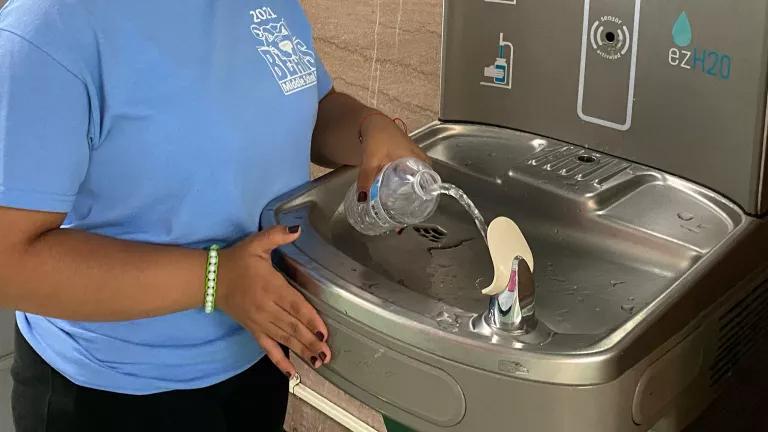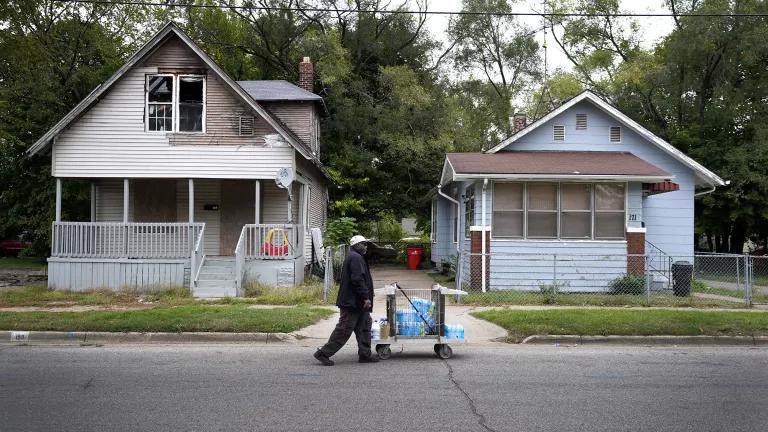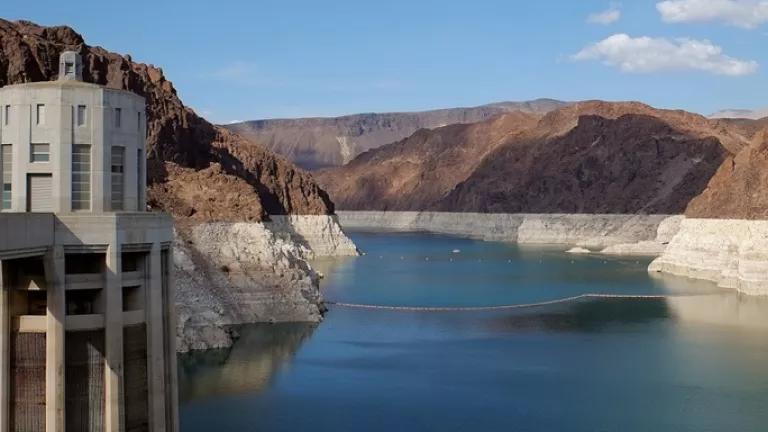A Huge Push to Remove Toxic Lead in School Drinking Water
President Biden has released his bold infrastructure package, which basically declares war on lead in drinking water, both in our homes and our schools.

Filtration Station in a Michigan school
President Biden has released his bold infrastructure package, which basically declares war on lead in drinking water, both in our homes and our schools, at a cost of $45 billion. NRDC wrote about the Biden Administration’s announcement to fund the removal and replacement of lead service lines—the pipes that run from the water main in the street into our homes. This blog addresses how lead gets into drinking water in our schools and childcare centers—and the most cost-efficient way to remove the lead.
Lead gets into the drinking water in our schools and childcare centers not from the water coming into those buildings, but from the water coursing through the buildings. Plumbing pipes and fixtures contain lead, and that lead flakes off or leaches into the drinking water. Unfortunately, federal law allows the plumbing pipes and fixtures to contain lead.
Children are the most susceptible to the irreversible adverse effects from lead, which include the failure to concentrate, reduced cognitive ability, and aggressive behavior. We want schools and childcare centers to be healthy places for children to learn and thrive. The President’s proposal recognized that not just our homes need to take care of the lead problem in drinking water—we also need to address the problem in schools: “In addition to reducing lead exposure in homes, this investment also will reduce lead exposure in 400,000 schools and childcare facilities.” If we fix the problem with lead lines in our homes, it’s counterproductive to send our kids to schools and childcare centers that still have a problem with lead in the drinking water.
We know what the problem is. We know what the solution is. It costs money, of course, to fix it, but that’s money well spent.
Filter First—The Gold Standard
So how do we do we fix the problem in schools and childcare centers? There are two main approaches in play in various states: “Filter First” and “Test and Chase.” Filter First is the gold standard. It requires the installation of filters, or fixtures with filters; testing then follows filtration. Washington, D.C. implements Filter First, and NRDC has developed model legislation that includes it. In contrast, Test and Chase means that schools test first and then “chase” or remediate the lead that will inevitably be detected.
Filter First is based on a few simple facts. We know that when we test for lead in drinking water in our schools and childcare centers, we find it. Indeed, the data from testing of all public schools in New York State for lead from drinking water taps showed that 82% of public schools had one or more taps that exceeded the EPA and New York action level of 15 parts per billion—an action level that is not health protective because there is no safe level of lead for children.
We also know that drinking water fixtures that include filters certified to remove lead work very well when installed and maintained properly. Schools that install new filtration stations (where kids can refill their water bottles) doesn’t just protect kids. Schools can also save money because Filter First is cheaper than Test and Chase, as demonstrated by a cost analysis that we did for Michigan schools.
The President’s announcement that this is a problem that needs to be fixed in our schools and childcare centers is an opportunity to get it right with Filter First. Let’s spend the money wisely. Let’s seize the mantle.


